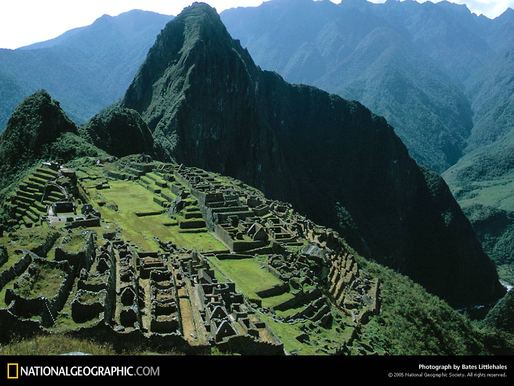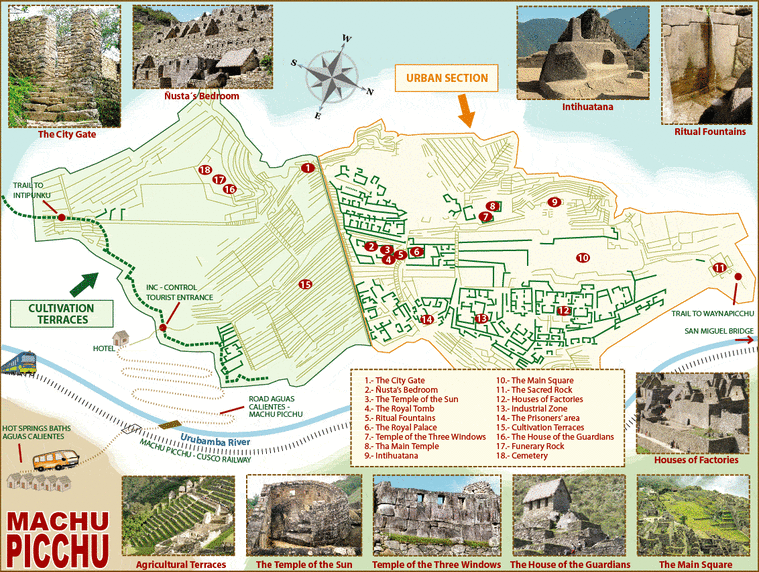Machu Picchu

These remarkable ruins were only rediscovered in 1911 by the American archaeologist Hiram Bingham. Perched dramatically 1000 ft above the Urubamba river, Machu Picchu is a UNESCO World Heritage site. It is also the end point of the most popular hike in South America, the Inca Trail.
The story of Machu Picchu is quite a remarkable one; it is still unknown exactly what the site was in terms of its place in Inca life. Current researchers tend to believe that Machu Picchu was a country resort for elite Incans. At any given time, there were not more than 750 people living at Machu Picchu, with far fewer than that during the rainy season. The Incas started building it around AD 1430 but it was abandoned as an official site for the Inca rulers a hundred years later at the time of the Spanish conquest of the Inca Empire.
One thing that is clear is that it was a remarkably well hidden place, and well protected. Located far up in the mountains of Peru, visitors had to travel up long valleys littered with Inca check points and watch towers. Remarkably, the Spanish conquistadors missed the site, and Bingham only located the site by chance. On a wet day in 1911, he traveled up the slopes with a few companions from his expedition. On meeting local peasants, they told him about ancient ruins that covered the area. To Bingham's amazement, he had found the lost Inca city of Machu Picchu.
Machu Picchu was declared a Peruvian Historical Sanctuary in 1981 and a UNESCO World Heritage Site in 1983. Since it was not plundered by the Spanish when they conquered the Incas, it is especially important as a cultural site and is considered a sacred place.
The story of Machu Picchu is quite a remarkable one; it is still unknown exactly what the site was in terms of its place in Inca life. Current researchers tend to believe that Machu Picchu was a country resort for elite Incans. At any given time, there were not more than 750 people living at Machu Picchu, with far fewer than that during the rainy season. The Incas started building it around AD 1430 but it was abandoned as an official site for the Inca rulers a hundred years later at the time of the Spanish conquest of the Inca Empire.
One thing that is clear is that it was a remarkably well hidden place, and well protected. Located far up in the mountains of Peru, visitors had to travel up long valleys littered with Inca check points and watch towers. Remarkably, the Spanish conquistadors missed the site, and Bingham only located the site by chance. On a wet day in 1911, he traveled up the slopes with a few companions from his expedition. On meeting local peasants, they told him about ancient ruins that covered the area. To Bingham's amazement, he had found the lost Inca city of Machu Picchu.
Machu Picchu was declared a Peruvian Historical Sanctuary in 1981 and a UNESCO World Heritage Site in 1983. Since it was not plundered by the Spanish when they conquered the Incas, it is especially important as a cultural site and is considered a sacred place.

